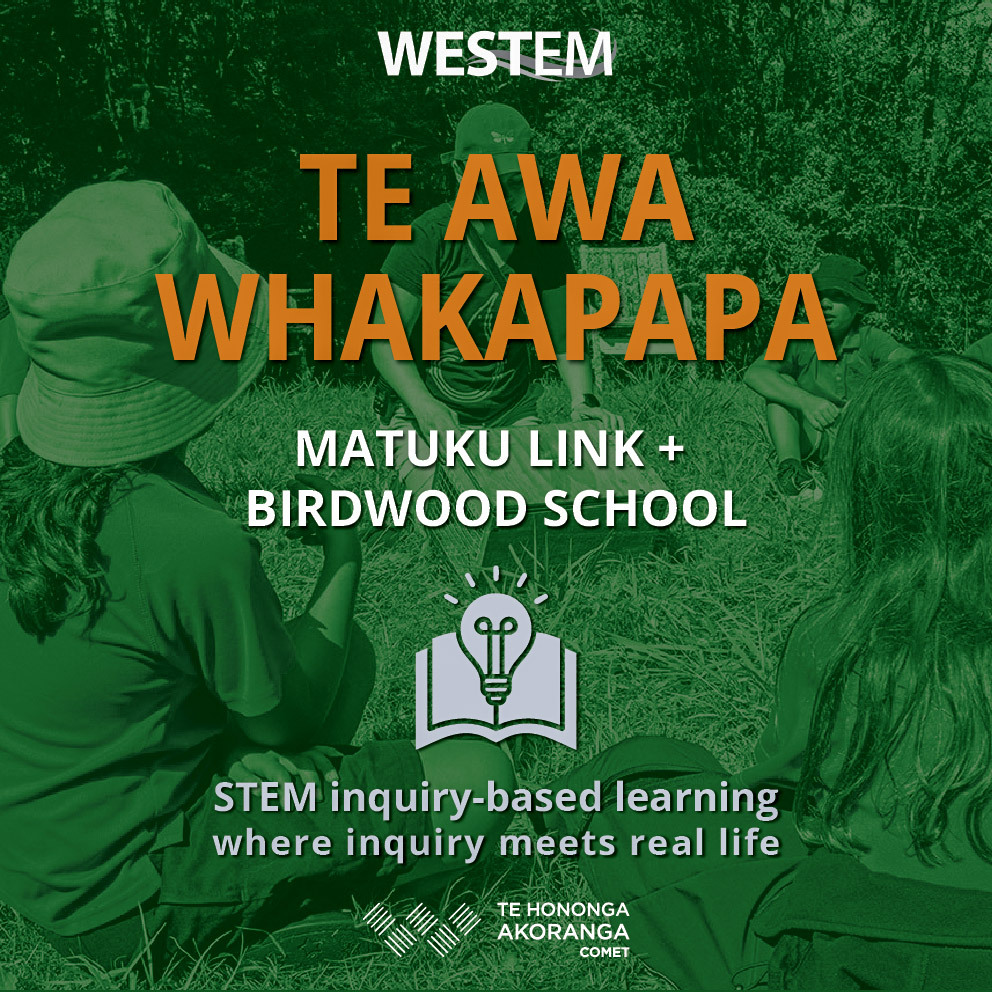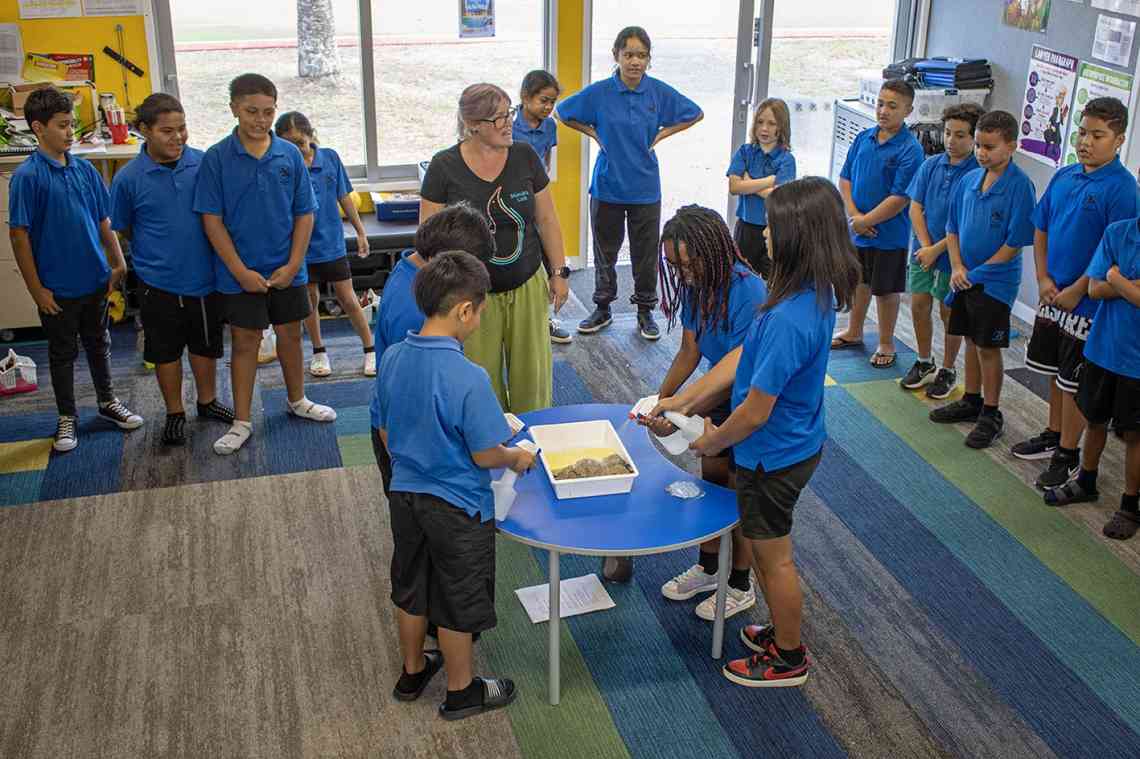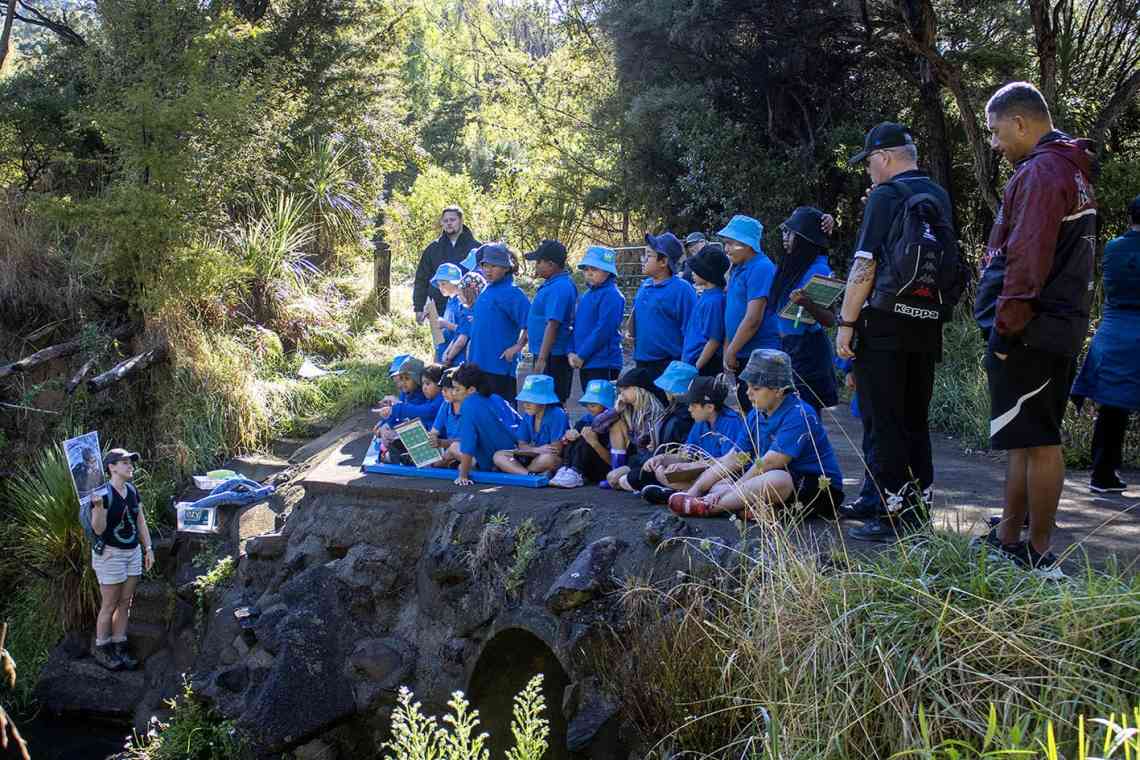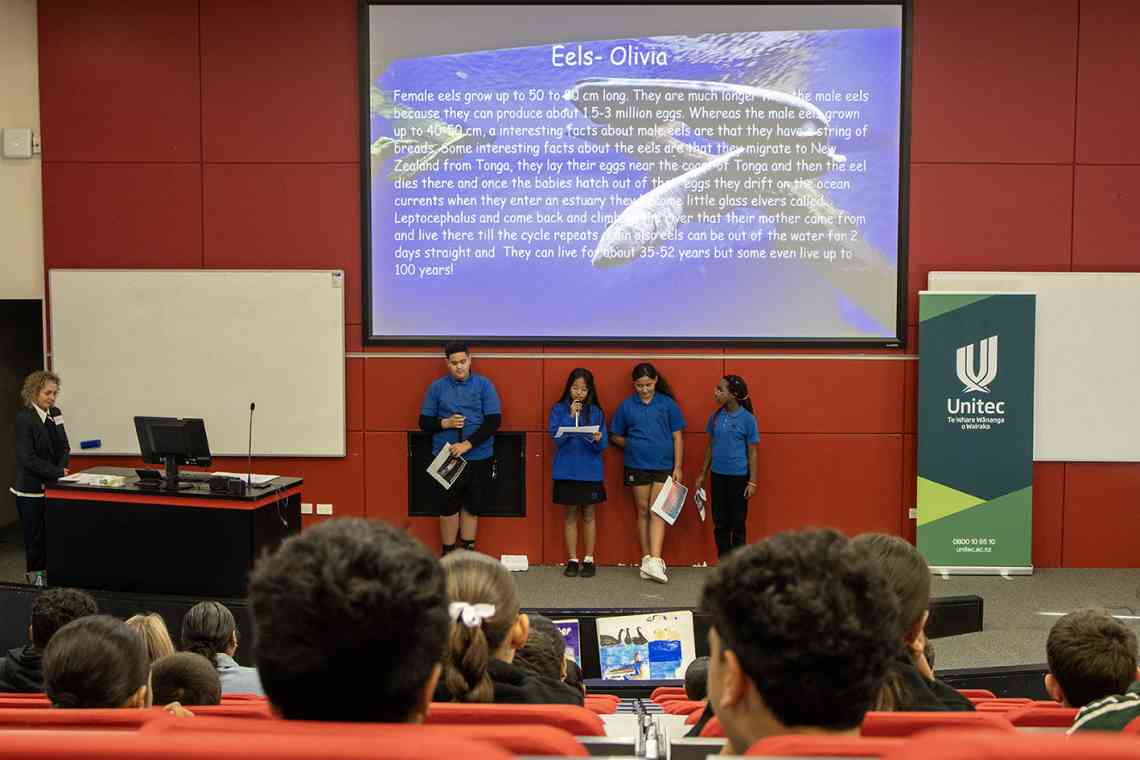WeSTEM 2025 - Te Awa Whakapapa: Uncovering Our Stream's Stories #
How have humans shaped our streams and wetlands — and what can we do about it today?
At Birdwood School in Rānui, a small, neglected stream has become the starting point for a powerful journey of curiosity, connection and kaitiakitanga.
As part of Te Awa Whakapapa, students explored the history, health and future of their local awa, guided by Matuku Link educators and local iwi Te Kawerau ā Maki.
What began as an environmental restoration effort quickly evolved into a rich inquiry into biodiversity, ecology, water quality and local history.
Students examined how human activity has shaped the environment over time and how mātauranga Māori concepts like taupuhipuhi (interconnectedness) and mauri (life force) can guide our responses today.

From classroom to wetland
The project followed a three-part learning journey, starting with introductory classroom sessions. Students then embarked on a field trip to the Matuku Reserve wetlands near Te Henga (Bethells Beach). The learning continued with follow-up activities back at school. The pre-trip learning was key: it built foundational knowledge and excitement, with students eager to apply what they’d learnt in the field.
During their trip, students were thrilled to spot the rare pāteke (brown teal) duck, a species they had researched and knew was rarely seen in daylight. They also compared water samples from their local stream with samples from the wetlands, using macroinvertebrate surveys to explore the effects of water quality on biodiversity.



Learning that lasts
Back at school, teachers wove the experience into science, literacy, maths and design thinking lessons. Students measured, analysed and discussed their real-world data, strengthening core skills while deepening their identity as kaitiaki (guardians).
Matuku Link educators also piloted new resources during the project, using student feedback to refine their delivery. These materials will support future environmental education sessions and help build lasting connections between students and the land.
Building skills and confidenceFor many students, the project was a turning point in seeing science as something they could do themselves, not just something that adults do in a lab. Working alongside STEM experts and their classmates in a social, outdoor learning space built confidence, collaboration and curiosity.
"Students are starting to see how much STEM is in everything they do. Science isn't something that happens elsewhere; it's something they can do."
KEVIN MEIKLE
Deputy Principal, Birdwood School
Partnerships with purpose
This work was made possible through strong collaboration between Birdwood School, Matuku Reserve Trust and Te Kawerau ā Maki. It’s a powerful example of how schools, community groups and STEM experts can come together to tackle local challenges while building essential skills.
As Aotearoa New Zealand looks to strengthen literacy and numeracy outcomes, projects like Te Awa Whakapapa show how real-world, inquiry-based STEM learning can lift those skills while also inspiring a generation of problem solvers, innovators and environmental guardians.